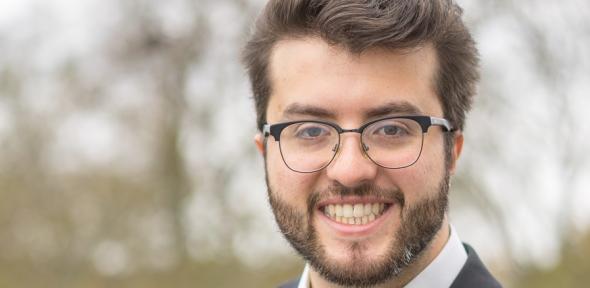
Date in FIBE: 2015-2020
Very brief history before joining: Before joining the FIBE-CDT I studied Civil Engineering at the National University of Colombia where I graduated with the Degree of Honour in 2014 and was working as a technical advisor in pavement engineering for a national project involving the upgrading of airport infrastructure in Colombia.
Title of thesis plus a very short summary: The title of my thesis is "Roads to adaptation: Understanding adaptation planning of urban road infrastructure". The main aim of my PhD project was to answer the research question "how can adaptation be incorporated into the planning and design of road infrastructure in cities?". For this, I developed a framework that conceptualizes in a simple, yet comprehensive manner the adaptation planning processes of urban road infrastructure and I demonstrated the practical utility of the framework through analysing an in-depth case study of the decision-making processes for the development and maintenance of road infrastructure of Bogotá, Colombia.
Why did you join FIBE?: I joined the FIBE-CDT because of its programme oriented towards the development of multidisciplinary research in civil engineering. When I was looking for a postgraduate programme to continue my education after my undergrad in Colombia I was not interested in pursuing a Master's or a PhD that would give me a very narrow specialisation in one of the different branches of civil engineering. The offer made by the FIBE-CDT of allowing you to see civil engineering as a cohesive discipline and to explore its connections with other disciplines when trying to solve present and future infrastructure problems was and is still very attractive to me.
How did it help you?: Besides the obvious of giving me an MRes and a PhD from the University of Cambridge and allowing me to become an expert in the field of adaptation of civil infrastructure to climate change, the FIBE-CDT has had other benefits for my career. It gave me the space to explore how social and socio-technical research can be done from an engineering perspective. The FIBE-CDT has also allowed me to be part of a wide network of researchers at the centre and the university and also of industry partners here in the UK. This has been helpful in my job hunting after finishing my PhD and I am quite sure this will bring me a life-time of benefits.
What are you doing now?: I am currently working as a Graduate Consultant for the Resilient and Sustainable Cities team from the Environment & Sustainability practice from AECOM UK.
Contact: jsc80@cantab.ac.uk

